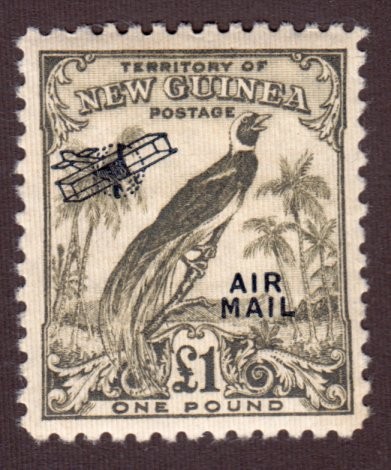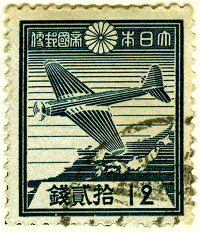
Discussion - Member to Member Sales - Research Center

Discussion - Member to Member Sales - Research Center



Would like to find out whether this is genuine or not the variety is on the middle stamp?

Login to Like
this post
I had posted a response to a query very similar to this but will cut and paste my answer here just in case you can't find my other post.
The EEF British Mandate stamps are fascinating and much has been written to assist the collector. The most useful resource I have found are the Bale catalogs.
This block of stamps is from the Jerusalem I release. When the British assumed control of much of Ottoman Middle East at the close of WWI, a stamp was issued first for military use ("the Blues") and later altered when reissued for civilian use. The stamp was first introduced in the 1 piaster value and featured an indigo background with a design by Lt. Rowntree, featuring a central Arabic calligraphy (Khalas el Urjah or Postage Paid in English) with denomination in English on the left side and in Arabic on the right. The E.E.F. on top and bottom stands for Egyptian Expeditionary Force (then the British Military in the Middle East). In 1920, the stamp was "re-issued" for civilian use in different values and colors. Beginning with the Jerusalem I series in September 1920, these aforementioned stamps were then re-issued with an overprint naming the Mandate in each of the 3 languages in use. The Arabic lies at the top and in this case measures 8 rather than 10 mm (you can also tell this by the distance comparison of the EEF being slightly larger then the Arabic line. PALESTINE lies in the middle and because the typeface has serifs (think Times New Roman rather than Helvetica font) it is one of the Jerusalem series. Finally at the bottom, is the Hebrew version read from right to left with one notable addition, the Aleph Yud abbreviation. In a bow to the Jewish Agency and the promise made by His Majesty's Government in the Balfour Decleration, this abbreviated form of Eretz Yisrael was added. This is the proper name for the area to all Jews during the 2000 years of the Diaspora. You should know that the name Palestine was invented by the Romans after subduing the rebellious province of Judea and was specifically chosen as a "poke in the eye" to the Jewish people as it was meant to closely resemble Philistina, or the historic arch enemy of Israel, the Philistines (as mentioned in Judges in the Bible).
Getting back to the stamp. The Jerusalem series is so termed because the overprinting was performed in the Greek Orthodox Convent of Jerusalem. The lithography plate used for the first series was composed of 2 horizontal dyes of 12 stamps each and because the dyes were fragile (made of lead) and the prinface was exceptionally small, there are a variety of constant flaws that recur throughout a printers sheet in the same locations. As such they cannot be considered errors. The 2 most famous and rare are the "Arabic Z' and the Hebrew Transposition. These flaws found in the first column and eleventh column of stamps in every sheet were discovered early before being delivered for retail sales and as such the first, eleventh and twelfth column of stamps of these printer sheets were removed and disposed of. Fortunately the collector will occasionally stumble on one but usually at a fairly high price.
The flaw in this case of PALESTINB is constant and found in positions 23 and 24. Other similar flaws include PALESTIN13 and the substitution of a square box for the final letter E. Other less common flaws include PALESTINF, PALKSTINE, PALESPINE and PALESTINR. Again the collector should be aware that these are not errors but constant flaws as errors typical come with a demand for a higher price than expected for a constant flaw.
As always, feel free to correct, amend or comment.
Joel in Minnesota

1 Member
likes this post.
Login to Like.
04:20:56pm


Would like to find out whether this is genuine or not the variety is on the middle stamp?

Login to Like
this post
08:09:42pm
re: Square PalestinB 3 stamps
I had posted a response to a query very similar to this but will cut and paste my answer here just in case you can't find my other post.
The EEF British Mandate stamps are fascinating and much has been written to assist the collector. The most useful resource I have found are the Bale catalogs.
This block of stamps is from the Jerusalem I release. When the British assumed control of much of Ottoman Middle East at the close of WWI, a stamp was issued first for military use ("the Blues") and later altered when reissued for civilian use. The stamp was first introduced in the 1 piaster value and featured an indigo background with a design by Lt. Rowntree, featuring a central Arabic calligraphy (Khalas el Urjah or Postage Paid in English) with denomination in English on the left side and in Arabic on the right. The E.E.F. on top and bottom stands for Egyptian Expeditionary Force (then the British Military in the Middle East). In 1920, the stamp was "re-issued" for civilian use in different values and colors. Beginning with the Jerusalem I series in September 1920, these aforementioned stamps were then re-issued with an overprint naming the Mandate in each of the 3 languages in use. The Arabic lies at the top and in this case measures 8 rather than 10 mm (you can also tell this by the distance comparison of the EEF being slightly larger then the Arabic line. PALESTINE lies in the middle and because the typeface has serifs (think Times New Roman rather than Helvetica font) it is one of the Jerusalem series. Finally at the bottom, is the Hebrew version read from right to left with one notable addition, the Aleph Yud abbreviation. In a bow to the Jewish Agency and the promise made by His Majesty's Government in the Balfour Decleration, this abbreviated form of Eretz Yisrael was added. This is the proper name for the area to all Jews during the 2000 years of the Diaspora. You should know that the name Palestine was invented by the Romans after subduing the rebellious province of Judea and was specifically chosen as a "poke in the eye" to the Jewish people as it was meant to closely resemble Philistina, or the historic arch enemy of Israel, the Philistines (as mentioned in Judges in the Bible).
Getting back to the stamp. The Jerusalem series is so termed because the overprinting was performed in the Greek Orthodox Convent of Jerusalem. The lithography plate used for the first series was composed of 2 horizontal dyes of 12 stamps each and because the dyes were fragile (made of lead) and the prinface was exceptionally small, there are a variety of constant flaws that recur throughout a printers sheet in the same locations. As such they cannot be considered errors. The 2 most famous and rare are the "Arabic Z' and the Hebrew Transposition. These flaws found in the first column and eleventh column of stamps in every sheet were discovered early before being delivered for retail sales and as such the first, eleventh and twelfth column of stamps of these printer sheets were removed and disposed of. Fortunately the collector will occasionally stumble on one but usually at a fairly high price.
The flaw in this case of PALESTINB is constant and found in positions 23 and 24. Other similar flaws include PALESTIN13 and the substitution of a square box for the final letter E. Other less common flaws include PALESTINF, PALKSTINE, PALESPINE and PALESTINR. Again the collector should be aware that these are not errors but constant flaws as errors typical come with a demand for a higher price than expected for a constant flaw.
As always, feel free to correct, amend or comment.
Joel in Minnesota

1 Member
likes this post.
Login to Like.

